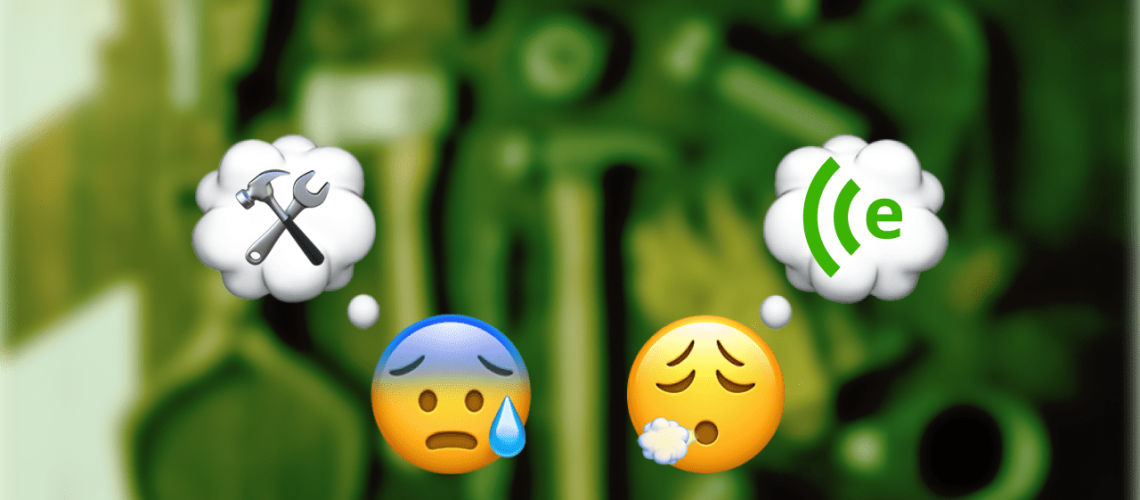Have you ever thought about what it would be like to write without a pen and paper or a digital device? Probably not, because we don't have to think about these types of tools as they are a given. Similarly, it's hard to imagine running successful agile projects without the right scrum master tools. Or being a modern construction company without appropriate state-of-the-art software (See for example: Employee GPS Tracking Apps). But with so many tools available for Scrum Masters, it can be difficult to choose the right ones. That's why I'm happy to share some insights and guidance on this topic in this blog post.
In the following sections, I discuss the variety of tools available to Scrum Masters and Agile Coaches and provide tips and tricks on how to use them effectively. I hope this article inspires you to experiment with different tools for Scrum Masters and find the tools that work best for you and your team, whether you're new to the Scrum framework or experienced. So without further ado, let's dive into the world of Scrum Master tools!
When it comes to agile project management, tools play a crucial role in facilitating collaboration, communication and visualization. But what exactly are Scrum Master tools, and why are they so important?
What are Scrum Master Tools?
At the heart of agile project management are iterative development, continuous improvement and a self-organizing team. Scrum Master Tools are simply all the tools that support Scrum Masters and Agile Coaches to effectively and efficiently manage an agile project and especially these tasks.
What are software tools for Scrum Masters?
There are several categories of tools for Scrum Masters to use in agile projects, each with its own advantages and disadvantages. Common categories include project management tools, collaboration tools, communication tools, and visualization tools.
Project Management Tools
Project management tools are used to plan and track the progress of projects. Examples include Jira, Trello and Asana. These tools are great for creating and assigning tasks, setting deadlines, and monitoring overall project progress. However, they can also be overwhelming and time-consuming if not used effectively.
Communication tools
Communication tools are used to facilitate teamwork and communication. Examples include Slack, Microsoft Teams, and Zoom. These tools are great for allowing team members to share their progress and feedback and coordinate their efforts. However, they can sometimes lead to communication overload that can distract team members from their work.
Collaboration tools
Collaboration tools are used to improve communication within the team and with stakeholders. Examples include whiteboard tools such as Mural or Miro. These tools can be helpful in clarifying requirements and sharing progress, but can also lead to misunderstandings and confusion.
Visualization tools
Visualization tools are used to make project progress more visible and understandable. Examples include Kanban boards, burndown charts, and sprint retrospectives. These tools can help the team see progress and identify areas for improvement, but they are not always appropriate or necessary for every project. They are often already integrated with other tools or toolsets.
Retrospective tools
To be honest, there is another category of tools that combine all or some of the above aspects: retrospective tools. Retrospectives can be conducted using some of the above tools or just pen and paper. They often overlap with the tools mentioned above, such as whiteboards, action items or agile metrics. The difference is that they are more about soft factors, such as running retros and team health, and less about the project management part of agile projects. Examples of such tools are Echometer, Parabol or Team Retro. You can find a comprehensive comparison in this article: 7 Best Retrospective Tools for Easy & Fun Retros in 2023.
Nevertheless, there are still some less technical tools for Scrum Masters, such as facilitation techniques, which in turn can be integrated with some of the software solutions mentioned above. We will go into these in more detail in the following sections.
What are facilitation tools for Scrum Masters?
Facilitation techniques play a critical role in Scrum events and yet are a type of Scrum Master tool used by Scrum Masters and Agile Coaches to enable team collaboration, generate ideas, prioritize tasks, and look back at past Sprints.
One of the most commonly used facilitation techniques is brainstorming. It is a technique in which the team develops ideas freely and openly, without criticism or judgment. It encourages creativity and helps teams explore new possibilities. Brainstorming can be used in sprint planning to identify tasks and prioritize the backlog, and in sprint retrospectives to identify areas for improvement.
Another popular technique is point voting, where team members vote with points for their preferred ideas or options. Point voting helps prioritize tasks and ideas quickly and effectively. It is often used during sprint planning and retrospectives, or when the team is stuck and needs to find consensus on a particular topic.
Retrospective techniques are also important facilitation techniques in sprint retrospectives. There are several retrospective techniques, such as "Glad, Sad, Mad," in which team members discuss what they liked, didn't like, and were upset about during the sprint. Another technique is the "Starfish" technique, where team members discuss what they want to start, stop, continue, do more of, or do less of. These techniques help identify areas for improvement and create action plans to address them. In Echometer there is a wide selection of over 50 different entertaining and engaging retrospective formats available for you to easily try out. 👇
Using these facilitation techniques can greatly improve team collaboration and communication. This allows teams to develop more ideas, prioritize them more effectively, and look back more efficiently. It also allows all team members to contribute equally and feel heard, creating a more inclusive and transparent work environment.
Scrum Master Tools Wrap-Up
Now that we have explored the world of Scrum Master tools and discussed various tools for Scrum Masters and Agile Coaches, we realize that these tools and techniques play an important role in facilitating successful Agile projects. In summary, we have covered Scrum tools of different categories such as project management tools, collaboration tools, communication tools, and visualization tools and also discussed facilitation techniques. We also talked about retrospective tools, which form their own category by incorporating several aspects of all the other tool categories.
It is important to remember that while these tools and techniques are helpful, they are not a magic solution. Each team's needs are unique, and it's important for Scrum Masters and Agile Coaches to experiment with different tools and techniques to find what works best for them and their teams. It's also important to understand that successful agile projects require constant adaptation and improvement, especially in a VUCA environment.
With this in mind, I now wish you a lot of fun trying out the next Scrum Master Tool!








